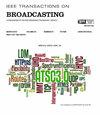基于层次间自适应知识蒸馏的无参考图像质量评估
IF 4.8
1区 计算机科学
Q2 ENGINEERING, ELECTRICAL & ELECTRONIC
引用次数: 0
摘要
与无参考图像质量评价(IQA)相比,全参考图像质量评价(IQA)由于有比较的参考信息,往往与人的主观感知具有更高的一致性。一个自然的想法是设计策略,让后者指导前者的学习,以获得更好的表现。然而,如何构建参考信息和如何传递先验知识是我们将要面临的两个重要问题,但尚未得到充分的探讨。为此,提出了一种基于层次间自适应知识蒸馏(AKD-IQA)的无参考IQA方法。AKD- iqa的核心是通过层次间的AKD将全参考教师模型的图像分布差异信息传递到无参考学生模型。首先,基于多级特征差异提取器和跨尺度特征积分器构建教师模型;然后,在大型合成失真数据集上进行训练,建立综合差分先验分布。最后,将图像再扭曲策略和层次间AKD引入到学生模型中以实现有效的学习。在六个标准IQA数据集上的实验结果表明,AKD-IQA达到了最先进的性能。此外,跨数据集实验也证实了该方法在泛化能力上的优越性。本文章由计算机程序翻译,如有差异,请以英文原文为准。
No-Reference Image Quality Assessment via Inter-Level Adaptive Knowledge Distillation
Compared with no-reference image quality assessment (IQA), full-reference IQA often achieves higher consistency with human subjective perception due to the reference information for comparison. A natural idea is to design strategies that allow the latter to guide the former’s learning to achieve better performance. However, how to construct the reference information and how to transfer prior knowledge are two important issues we are going to face that have not been fully explored. To this end, a novel method called no-reference IQA via inter-level adaptive knowledge distillation (AKD-IQA) is proposed. The core of AKD-IQA lies in transferring image distribution difference information from the full-reference teacher model to the no-reference student model through inter-level AKD. First, the teacher model is constructed based on multi-level feature discrepancy extractor and cross-scale feature integrator. Then, it is trained on a large synthetic distortion dataset to establish a comprehensive difference prior distribution. Finally, the image re-distortion strategy and inter-level AKD are introduced into the student model for effective learning. Experimental results on six standard IQA datasets demonstrate that the AKD-IQA achieves state-of-the-art performance. In addition, cross-dataset experiments confirm the superiority of it in generalization ability.
求助全文
通过发布文献求助,成功后即可免费获取论文全文。
去求助
来源期刊

IEEE Transactions on Broadcasting
工程技术-电信学
CiteScore
9.40
自引率
31.10%
发文量
79
审稿时长
6-12 weeks
期刊介绍:
The Society’s Field of Interest is “Devices, equipment, techniques and systems related to broadcast technology, including the production, distribution, transmission, and propagation aspects.” In addition to this formal FOI statement, which is used to provide guidance to the Publications Committee in the selection of content, the AdCom has further resolved that “broadcast systems includes all aspects of transmission, propagation, and reception.”
 求助内容:
求助内容: 应助结果提醒方式:
应助结果提醒方式:


